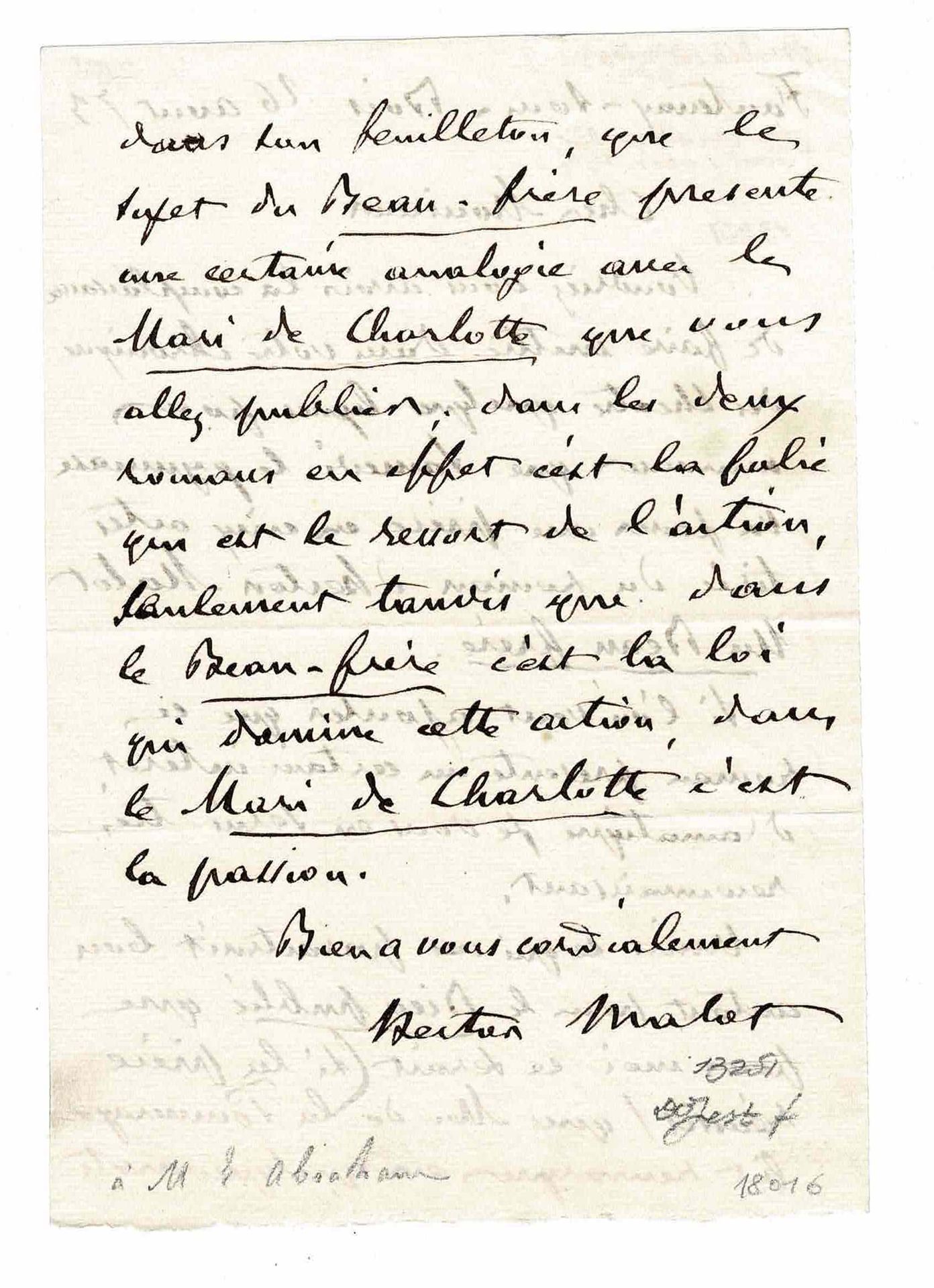Description
LITERATURE - MALOT Hector (1830 - 1907) - Autograph letter signed
He worked for his father, a notary, while studying law. His first book (Les amants) was a great success. He became a popular novelist with the publication of seven novels. Autograph letter signed "Hector Malot" (to Abraham according to an annotation), Fontenay sous Bois, August 26, 1873, 2 pp. in-8°. Beautiful piece. Letter relating to the performance of "Un Beau Frère", a drama taken from his novel. By de la Pommeraye, if the play succeeds, could attract attention, in its fuilletton " Bien public" on the analogy that the play presents with "Le mari de Charlotte".
616
LITERATURE - MALOT Hector (1830 - 1907) - Autograph letter signed
You may also like
